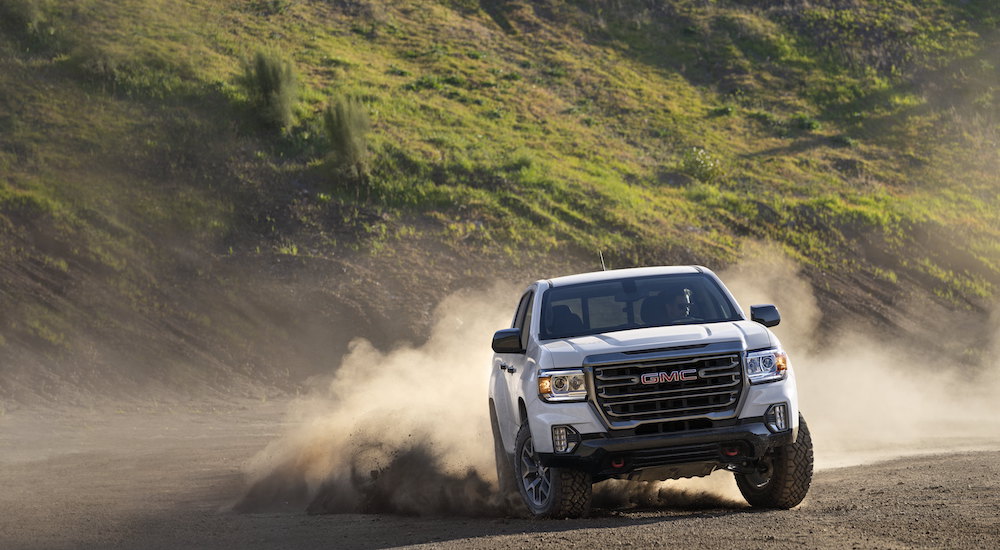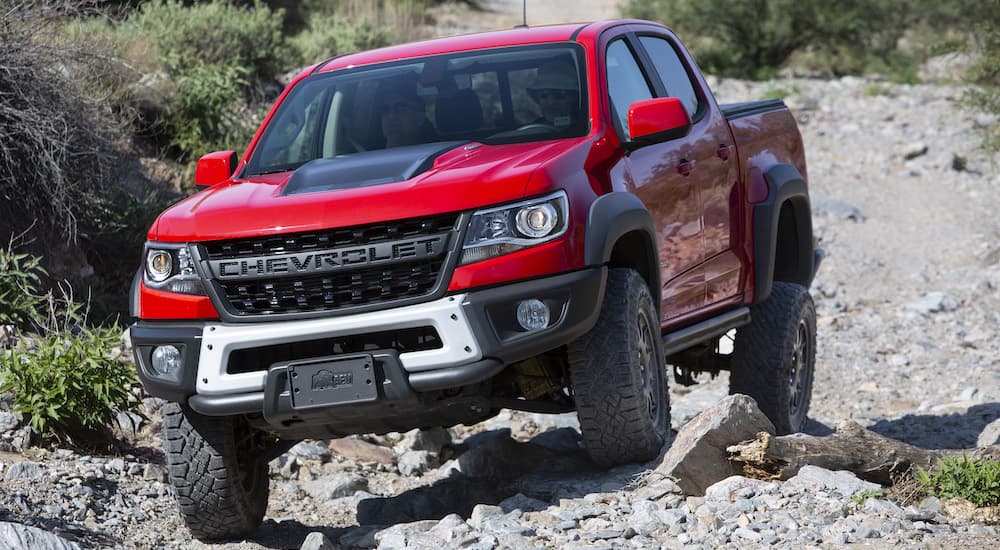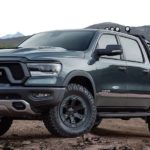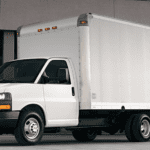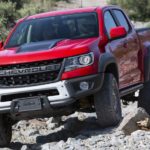Considering getting a lifted truck? The phenomenon of lifted pickup trucks has been around for some time and, by all indications, is here to stay. If you’re unsure what we’re talking about, picture a traditional pickup truck, mix in some height, stir in some big wheels, and voila! Now you have a lifted truck. Lifting a truck serves several purposes. Regardless of the reason, it’s a sure way to turn heads and conquer the road.
Lifted trucks come in two forms: factory and aftermarket. If you find yourself shopping around for a used truck and it’s not lifted, don’t despair. The aftermarket world of lift kits is vast and worth the expedition. Figuring out how high you want your next truck can be difficult; however, once you’ve figured out a height, you can forge ahead with tracking down that perfect truck. You may want to consider some specifics when searching for a used lifted truck for sale. Let’s take a closer look at the variables that will help you make an informed decision.
What Is a Lifted Truck?
Pickup trucks account for 20 percent of all vehicles on American roads today. With such a large saturation, how can anyone stand out from the pack? Popular trucks like the Ford F-150, Toyota Tacoma, Chevy Silverado, and Ram 1500 can be seen on any road at all hours of the day. Pickup trucks have a distinct rugged and bold style but often closely resemble one another. This is where customization is so valuable.
Truck drivers these days have tons of options for personalizing a pickup according to how they want to use it. For many, pickup trucks serve multiple functions in their lives, like going from a daytime work truck to a family vehicle. That means drivers need a truck that can be versatile and perform well in city and country conditions alike. These vehicles need to be capable of handling off-road excursions, as well as busy downtown streets.
When you hear the term “lifted truck,” it refers to a special lift kit installation on a pickup truck that allows for the addition of larger tires and better suspension. These elements can be added when a truck is lifted, creating a larger gap between the frame and body. There are three types of commonly seen lift kits. The type of lift kit you’ll spring for depends on the type of truck, desired tire size, and budget. As a rule of thumb, the taller the kit, the more it will cost.
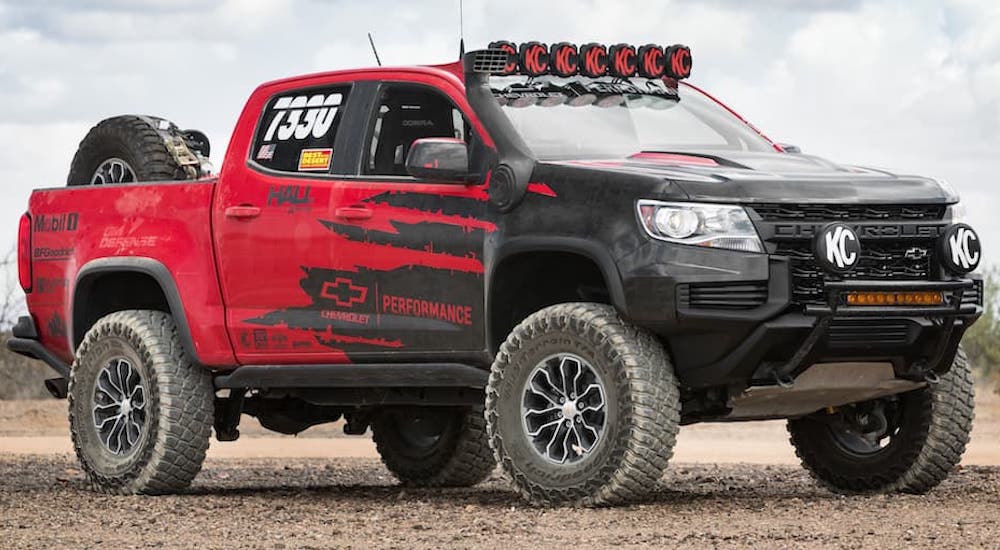
Body Lift Kit
A body lift kit raises the body of your truck higher but without providing additional ground clearance. The chassis and suspension remain at the same level. Instead, a body lift kit installs a set of spacers that separates your frame from the suspension. This isn’t the option for you if you intend on lifting your truck for off-roading purposes. However, a body lift kit is great for trucks that see a lot of city and highway traffic and adds height without jeopardizing your truck’s handling or comfort. Plus, you can still add larger tires, usually up to 33 inches.
Suspension Lift Kit
A suspension lift kit adds height and ground clearance to your truck. It’s the most customizable and, therefore, the most expensive. It includes leaf spring shackles, coil-spring bushings, and full suspension kits. A suspension lift kit gives you the opportunity to add larger tires, raise the chassis, and replace your suspension. It may require a few other components, like longer shocks, in order to correct the driveline and alignment. This suspension lift kit is a dream for off-roading, providing maximum flexibility for ground clearance and larger tires.
Leveling Lift Kit
The third and final type is the leveling lift kit. They do as the name suggests and level out the stance of your truck’s front to the stock height of the rear, allowing you to add larger tires to the front end of your truck. Leveling lift kits often include torsion keys, blocks, and extra leaf springs. They’re the simplest to install and typically the least expensive. These kits are great if you use your truck for hauling heavy payloads. It’s also a way to enhance the overall appearance.
Which Lift Is Right for You?
If you’re buying a used lifted truck, you won’t have much say in which kit it comes with. It likely won’t be cost-effective to change a lift kit. But if you’re buying a used truck and adding an aftermarket lift kit, you’ll have a few considerations to make before choosing the right one. How do you want to use your truck? Function is a big factor in choosing the right lift kit. Different kits are better for city driving versus off-roading. Consider your budget. Some lift kits require additional parts and labor for alignment and to maintain ride quality. Thankfully, the market is full of lifted used trucks, so you can search for the one you want. If you’re using an aftermarket kit, be sure to use a reputable installer. An improperly installed lift kit can damage your truck, ruin your handling on pavement, and increase the chance that your truck tips over.
Aftermarket lift kits are a bit more of a risk than a factory lift kit. Factory kits are provided by your truck’s automotive maker and are generally not very high, usually limited to two or three inches. When springing for an aftermarket kit, check if the lift kit may impact any warranty programs. When you’re done with all the serious business, don’t forget to enjoy the process of choosing a lift kit. Once it’s installed, enjoy every minute of it.
Why Lift?
Truck owners add lift kits to their vehicles for several different reasons. One of the first benefits is sitting higher and enjoying a better vantage point. Regardless of the type of lift kit, all three provide a higher seat from which you can easily see above other traffic. Seeing upcoming obstacles may help you save time on your commute and avoid hassles such as accidents, roadblocks, curbs, potholes, and more. Some states have legal limits on how tall your truck can be, so be sure to stay within those guidelines to avoid being ticketed.
A lifted truck is the best companion for an adventurous lifestyle that includes off-roading. Bigger wheels, more ground clearance, and better shocks permit your truck to handle the toughest terrains. With more ground clearance, you can tackle steep hills, rocky paths, mud, and sand with ease. A higher truck stance protects the truck from dings and scratches, and the suspension prevents you and your passengers from some of the bumpy irregularities.
Overall, a lift kit makes it simpler to maneuver in any off-roading conditions you can dream of. An unexpected benefit to lifting a truck is that it also increases tow capacity. If you’re a pickup truck driver who tows from time to time, you’ll appreciate that lifting it will create better dynamics for your towing setup since the weight is being redistributed, especially for bigger items like a trailer or boat.
To Lift or Not to Lift
Whether you’re buying a used truck with an existing lift kit or adding one aftermarket, it’s key to establish what purpose a lifted truck will have in your life. If you’re off-roading, looking for a higher vantage point, or just looking to level out your hard-working tow truck, there is a lift kit for you. These lift kits make everyday truck ownership easier by expanding the capabilities of any pickup. They’re functional and stylish. Even if you’re lifting your truck purely for performance, you’ll still reap the benefits of a bad-ass-looking ride.
